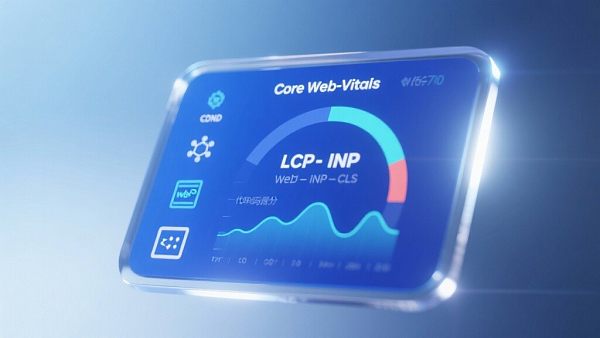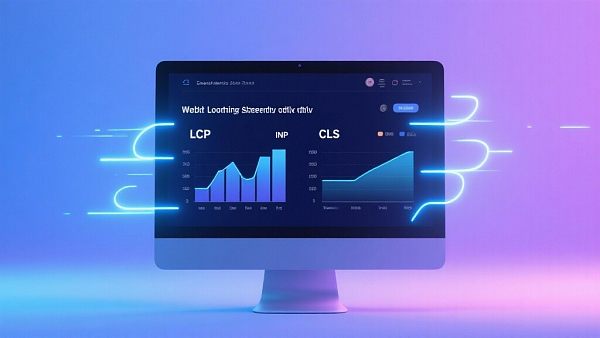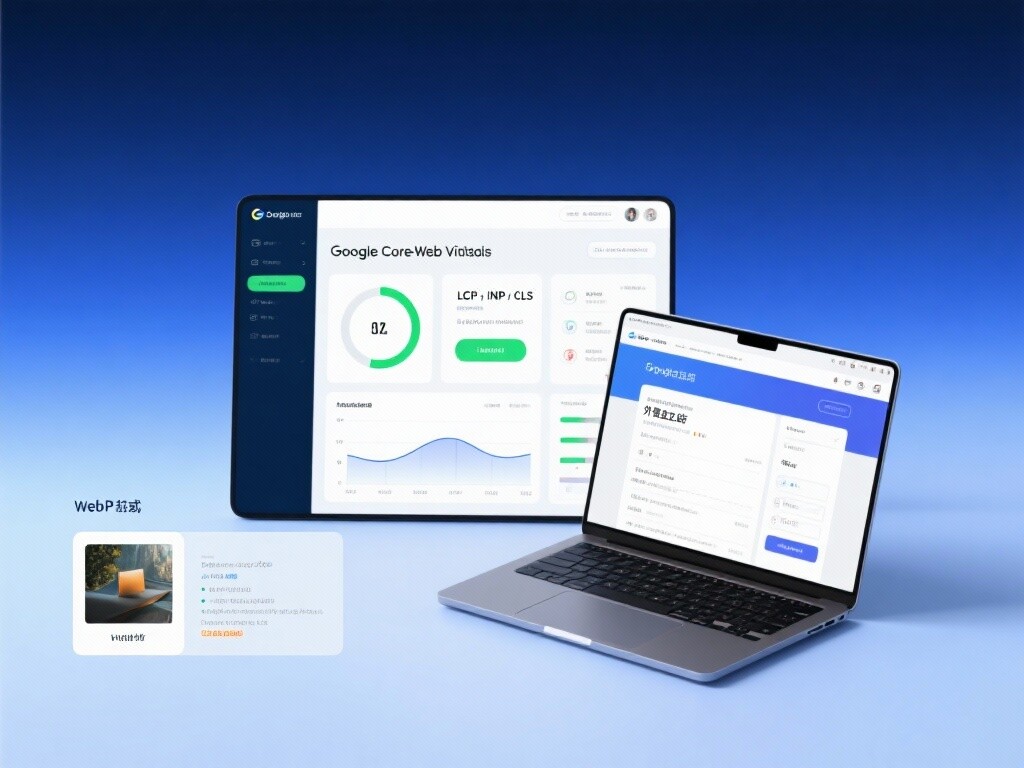EasyStore Cloud Intelligent Website Marketing System Platform!
I. Authoritative Definition, Strategic Core, and CWV Metrics Analysis of Website Loading Speed
1. Authoritative Definition and Key Metrics of Website Loading Speed
**Website loading speed** refers to the total time taken from when a user initiates a request until the page content is fully displayed and becomes interactive. In the context of modern SEO, it is primarily measured by **Google Core Web Vitals (CWV)**:
- **LCP (Largest Contentful Paint):** Measures loading performance. Should complete within **2.5 seconds**, serving as the primary metric for users' perceived page loading speed.
- **INP (Interaction to Next Paint):** Measures interaction responsiveness. Should complete within **200 milliseconds**, replacing FID and focusing on the time it takes for the browser to respond to the user's first click.
- **CLS (Cumulative Layout Shift):** Measures visual stability. Should be less than **0.1**, avoiding element shifts during loading that affect user experience.
2. The Three Irreplaceable Strategic Values of Website Speed Improvement
Speed is the lifeline of foreign trade independent websites:
- **Directly impacts Google SEO ranking:** CWV is now one of Google's **core ranking factors (Page Experience Signal)**. Slow speed means a ranking disadvantage.
- **Significantly reduces bounce rates and improves user experience (UX):** Research shows that if a page takes more than 3 seconds to load, **53% of mobile users will leave**. Faster speeds notably lower bounce rates and improve satisfaction.
- **Achieves linear growth in inquiry and order conversion rates (CRO):** Every 1-second improvement in website speed boosts conversion rates by an average of 7%. For B2C/B2B foreign trade, speed is the **first optimization checkpoint** for leaky conversions.
3. The Evolution of Website Speed Optimization Techniques
Early era (2000s): Focused on **compressing HTML and CSS**. Mid-era (2010s): Emphasized **CDN deployment, image optimization, and browser caching**. Modern era (2020s to present): Core techniques shifted to **user-centric CWV optimization**, focusing on **TTFB, LCP, INP**, and more complex **code splitting, rendering path optimization, and edge computing**.
II. Five Core Technical Principles for Accelerating Website Loading Speed: Architecture, Rendering, and Transmission Optimization

The underlying technical logic for achieving peak website performance:
1. Global CDN (Content Delivery Network) and TTFB Optimization Principle
Principle: **TTFB (Time to First Byte)** is an indicator of server response speed. Practice: Deploying **global CDN** caches static resources to the nearest edge nodes, **reducing physical distance**. Also, optimize server configurations and backend code to ensure the server can **send the first byte within 600 milliseconds**, laying the foundation for LCP optimization.
2. Critical Rendering Path Optimization Principle
Principle: Browser rendering can be blocked by **CSS and JS files**. Practice: Use **critical CSS/JS splitting** to inline the minimal CSS and JS required for above-the-fold rendering into HTML, ensuring the browser can **render above-the-fold content immediately**. Non-critical resources are deferred or loaded asynchronously.
3. Next-Gen Image Formats and Lazy Loading Principle
Principle: Images are a major contributor to page bloat. Practice: Convert images to **WebP or AVIF formats** (smaller sizes) and use **Lazy Load** to ensure **images load only when scrolled into view**, significantly reducing LCP time.
4. Eliminating Rendering Blocking and INP Optimization Principle
Principle: Complex JS tasks **block the main thread**, delaying user interactions (e.g., button clicks). Practice: Use **code splitting**, offload heavy JS to **Web Workers**, and optimize third-party scripts to **free the main thread**, ensuring INP compliance.
5. Browser Caching and Long-Term Cache Strategy Principle
Principle: Leverage browser caching so users **load resources locally on subsequent visits**. Practice: Set **Cache-Control Headers** for static resources with **long-term caching (e.g., one year)**. Only force re-downloads via **cache busting (e.g., filename hashing)** when content changes.
III. Four Core Technical Features and Applications for Accelerating Website Loading Speed
1. Technical Feature: Resource Preloading (Preload/Prefetch)
Feature: While users browse the current page, **preload resources or key fonts/images they might access next**. Application: Use `` to prioritize critical LCP resources and `` to preload subsequent page resources, **enhancing perceived speed**.
2. Practical Application: Foreign Trade E-Commerce Product Image Optimization and WebP Conversion
Application: Foreign trade e-commerce sites often have high-resolution product images. **Automated WebP conversion** paired with **`
3. Practical Application: Eliminating Third-Party Script Blocking (e.g., GTM, Analytics, Live Chat)
Application: Foreign trade sites often integrate multiple third-party tools. Solution: **Delay non-essential scripts (e.g., Live Chat)** or configure **Google Tag Manager** to ensure these scripts don’t block critical rendering.
4. Practical Application: Server-Side Rendering (SSR) or Static Site Generation (SSG)
Application: For modern frameworks (e.g., React/Vue), **SSR or SSG** pre-renders pages to HTML on the server, **drastically reducing TTFB and LCP**, making it the ultimate solution for modern site speed.
IV. Website Speed Optimization vs. Basic Site Building: Comparative Analysis and Industry Scenarios

1. Professional Speed Optimization vs. Basic Site Building Comparison
2. Typical Industry Scenarios for Website Speed Optimization
These industries demand extreme speed and require professional optimization:
- **Cross-border B2C e-commerce (DTC brands):** Conversion rates are highly sensitive to speed—every millisecond affects checkout rates.
- **Large B2B industrial/technical solution providers:** Sites with high-res images, videos, and complex scripts present high optimization difficulty.
- **High-traffic content marketing sites:** Reliant on Google rankings and article pages, where speed is the cornerstone of rankings and revenue.
3. Standards and Professional Norms for Website Speed Optimization
Metrics for professional speed optimization services:
- **CWV compliance commitment:** Ensures post-optimization **Field Data CWV metrics meet "Good" standards**.
- **Tool scores:** Post-optimization **Google PageSpeed Insights and GTmetrix scores reach 90+**.
- **Technical stack depth:** Full-stack optimization capabilities covering **CDN configuration, frontend performance, and backend servers**.
V. Take Immediate Action: Boost Website Loading Speed by 80% and Seize Google Rankings and Inquiries First!
Does your site exceed LCP targets, leaving users waiting after clicks? In the fiercely competitive global market, **speed is profit!** Our **Website Loading Speed Optimization Service** provides **comprehensive CWV compliance, global CDN deployment, and frontend rendering block elimination**. Schedule a **free "Core Web Vitals Deep Diagnosis"** for a detailed performance optimization report!
Click for a Free Performance Optimization ReportFAQ

Customer Reviews


